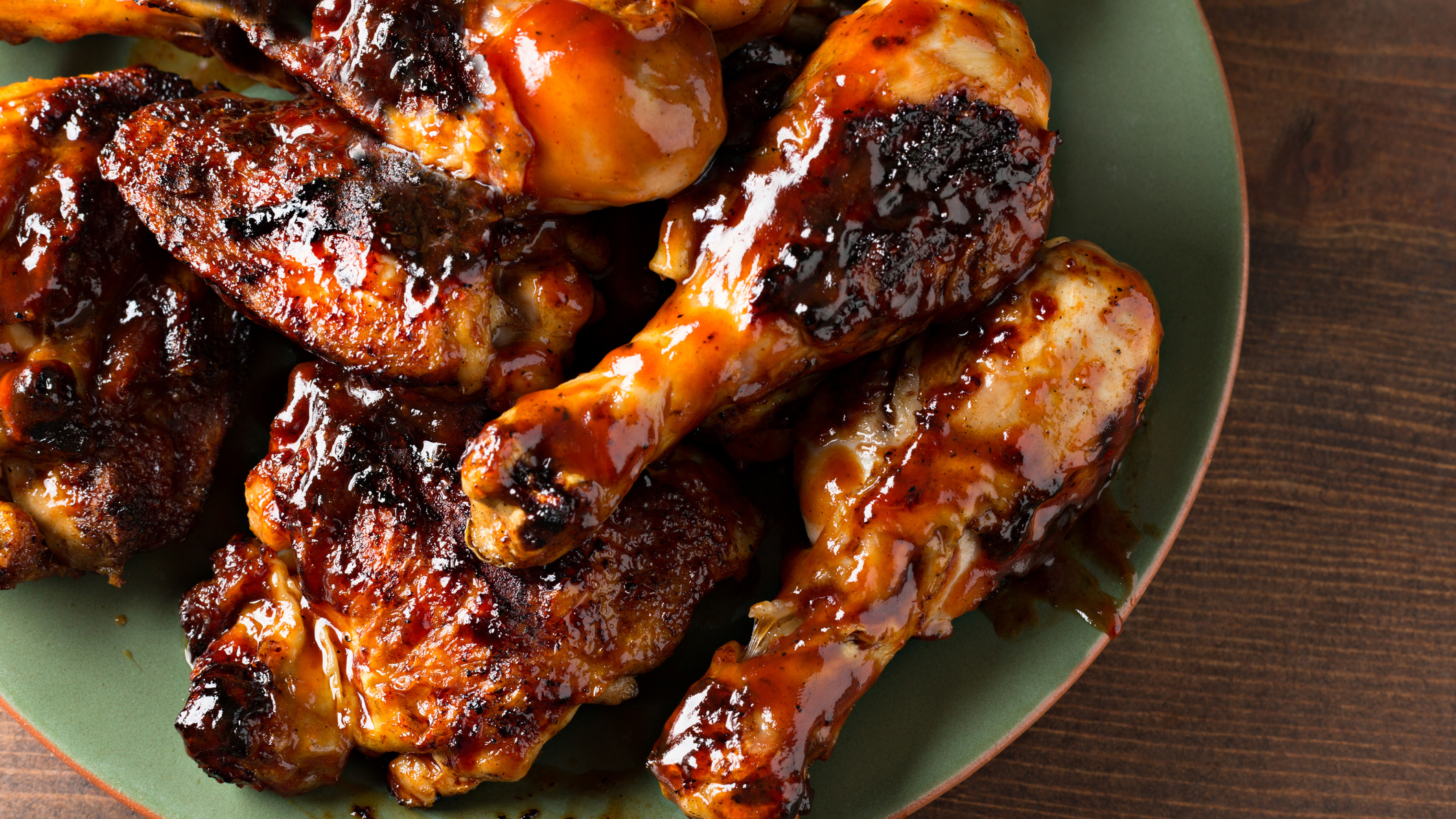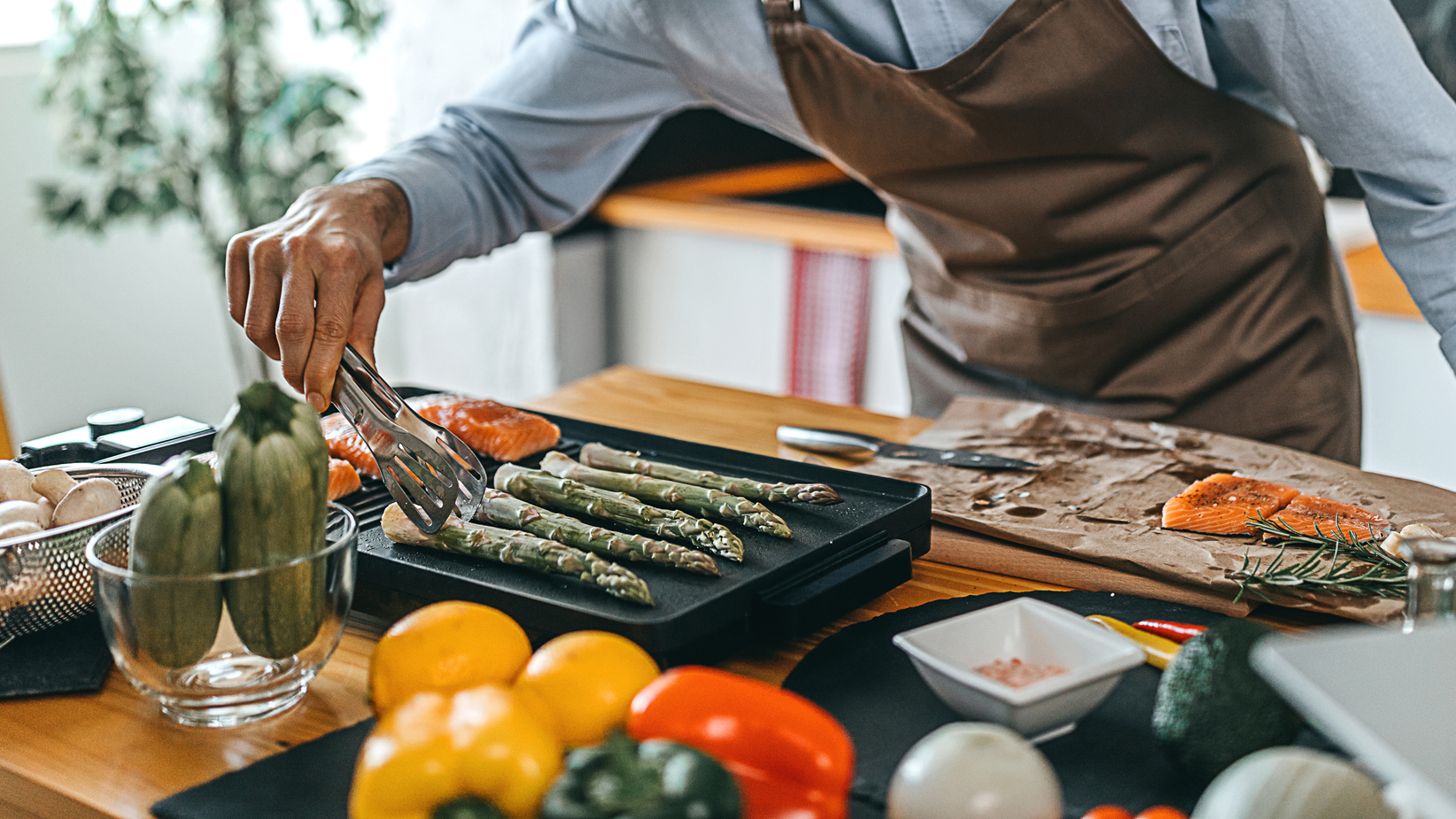What's the healthiest way to grill chicken, pork and steak? Science weighs in
Grilling meat is thought to be good for you, but we've still got questions. Electric or open flame? Fat on or off?


In moderation, meat is pretty good for us. It's one of the best sources of protein, but it's also got vitamins, minerals and beneficial fatty acids. But whether you want to eat chicken, beef, pork, turkey, lamb or any other source of meat, how you prepare that meat can make all the difference to its nutritional content.
Since roasting and frying often involve dousing the meat in additional sources of fat such as butter and oil, grilling has become a very popular and healthy way to prepare meat, which is why the best grills have become such popular items recently.
But what's the best, healthiest way to grill meat: do you strip the fat or leave it on? Do you use an open flame on a barbecue, or a countertop electric grill? Let's look at the facts.
Open flame vs electric grill
There's no substitute for a grilled steak or burger over an open flame, but consuming meat cooked in this way on a regular basis is quite bad for you. Cooking over an open flame creates a charred exterior which, while delicious, also results in the creation of something called heterocyclic amines and polycyclic aromatic hydrocarbons due to reactions at high temperatures, and changes that occur when the meat's juices and fat drip into the flames.
According to the National Cancer Institute, these chemicals increase depending on how well-done you like your meat. However, studies have shown that exposure to HCAs and PAHs can cause cancer in animals, and meat cooked at very high temperatures has been linked to cancer in people.
It's worth noting those studies treated rodents with many times the amount of chemicals humans would be exposed to in an everyday diet, so the occasional BBQ is unlikely to hurt. However, electric grills usually offer temperature control settings, and the lack of an open flame means the fat runs down the grill into the tray before it has a chance to react to the heat.
Cooking meat on a day-to-day basis? Go electric.
Start your week with achievable workout ideas, health tips and wellbeing advice in your inbox.

Lean meat or fatty meat?
The other big question surrounding meat consumption is whether to opt for lean cuts or fatty cuts, or even whether to slice fatty bits off the cut of meat before eating. There's no doubt as fat renders during cooking, it imparts the meat with some lovely flavours. However, is it safe to eat?
Old wisdom was to cut the fat off your meat before eating it. This has changed somewhat in the last few decades, as we now understand fat can actually be good for us, containing beneficial branch-chain fatty acids like omega-3.
However, one thing's for sure is that fat contains quite a lot of calories. Looking at the nutritional website NutritionData, we can see the amount of calories for one cup (140g) of lean diced chicken contains 231 kcals on average. Meanwhile, the wings, skin and thigh meat of the chicken contains 406 kcals, almost double the amount of calories.
If you're already on a diet high in carbohydrates, leaner cuts and stripping away fat might be your best choice. If, however, you're on a low carbohydrate diet like the keto diet, fattier cuts of meat will provide you with the energy you're not getting via carbs.
Matt Evans is an experienced health and fitness journalist and is currently Fitness and Wellbeing Editor at TechRadar, covering all things exercise and nutrition on Fit&Well's tech-focused sister site. Matt originally discovered exercise through martial arts: he holds a black belt in Karate and remains a keen runner, gym-goer, and infrequent yogi. His top fitness tip? Stretch.
